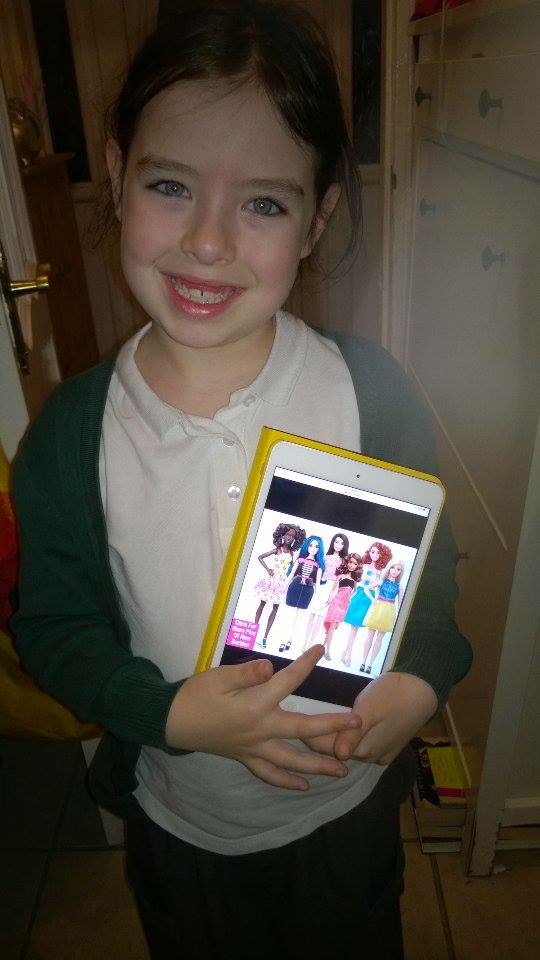THERE'S nothing quite like a Barbie makeover to stir up a social media storm.
They don’t look right, only skinny girls are beautiful.
After enjoying 57 years of legs twice the length of her torso, perfectly symmetrical perky breasts, and a waist the circumference of her head, Barbie has been transformed.
It's raised the question whether Barbie should reflect the body shapes of everyday women, or whether we are prematurely introducing children to the concept of body image and conformity.
As a child, I lived vicariously through Barbie with her pink convertible, cheerleading outfits, her daily trips to the beach, and her acrobatic prowess. She had the perfect blonde hair, and she was allowed to wear miniskirts. I wanted to live in the Barbie dream house: there was no way I was going to fit.
Most women have a Barbie story. Growing up with three sisters, I have Barbie stories aplenty. My incredibly patient dad was constantly stepping on Barbie shoes and hairbrushes strewn across the lounge floor, perfecting his silent grimace-hop. One day I decided to assume the role of amateur Barbie hairdresser. My generic blonde Barbie got an edgy Miley pixie crop. My younger sister pleaded with me, ‘please will you do mine as well, Amirah,' her Barbie had luscious red hair. I got a bit scissor happy, and Beth looked like an inmate from a high-security prison with perfect eyeliner. My sister snitched on me, and my mum spent hours on the phone to Mattel trying to get Beth a replacement head, but to no avail. My mum still doesn’t let me forget it twenty years on. The reason why my crime against Beth was so heinous? ‘Amirah, she’s limited edition with her red hair. She’s rare.' My juvenile crime against diversity: victimising the ginger Barbie. I think my mum felt particularly aggrieved as a fellow redhead.
But now, Barbie truly is diverse in 2016 and Barbie has joined the ranks of real women - well sort of. She comes in four different sizes: the warped [classic] dimensioned Barbie, ‘curvy’, ‘tall’ and ‘petite’.
I wondered what today's little girls really thought of Barbie's new look.
I quizzed seven-year-old Danya on what she thought of Barbie’s new curves. Honest in the refreshing way kids are, she said she prefers the original Barbie because she’s “blonde and skinny” and that “the ones with brown hair are beautiful too." On the curvy dolls, she said “they don’t look right, only skinny girls are beautiful.”
Would Danya have the same view if all she had seen were the more voluptuous Barbies, or by seven, has she already been conditioned into believing skinny is beautiful?
Hope, also seven-years-old, said: “It’s good that we have bigger dolls because some people might be sad because there are no Barbies like them." When I asked her to pick her favourite, she picked the petite Hispanic doll, but on whether the curvy dolls or the skinny dolls are more beautiful, she apologetically said, “I have to be true, it’s the skinny ones”.
Sigh.
 Seven-year-old Hope: "It’s good that we have bigger dolls..."
Seven-year-old Hope: "It’s good that we have bigger dolls..."
Not only does the new Barbie come in several shapes and sizes, she now comes in seven different skin tones, with 22 different eye colours and 24 separate hairstyles. Some might argue that placing so much emphasis on the dimensions and colouring of a plastic doll is yet another example of political correctness permeating the playground. But multiculturalism isn’t abstract, it’s real life. As Evelyn Mazzocco, Senior Vice President and Global General Manager, suggests what’s the harm in making Barbie ‘represent a line that is more reflective of the world girls see around them – the variety in body type, skin tones and style allows girls to find a doll that speaks to them.’ Mazzocco isn’t wrong. Yet aren’t toys just toys, and isn’t elevating Barbie to the status of ‘role model’ a stretch?
Whilst the new dolls challenge plastic notions of perfection, shouldn’t we be doing more to challenge the primacy of beauty over brains? Maybe Barbie gets herself a PHD (and we’re not talking about Ken on her arm) in coming years? Commentators have asked why we don’t have transgender or lesbian Barbie: styling Barbie based on her sexuality is a step too far. What would ‘lesbian Barbie’ even look like?
What about Ken? We aren’t so concerned about diversity when it comes to considering Barbie’s main squeeze. Perhaps we should introduce Ken to the art of growing facial hair and tasteful tattoos. Perhaps not. What is clear is the beauty standards aren’t the fault of plastic playthings, they come from us. Notions of beauty aren’t static, they evolve and Barbie has been forced to play catch-up.
Some might argue that politicising playtime is unnecessary, and we should leave the dolls alone. Or maybe it’s just a case of the grown-ups being more bothered about it than the kids. When I asked five-year-old Alex if the new Barbies are any different to any other Barbies, she said: "Err…no. They’re all the same."
Follow @MissAmeerkat on Twitter










